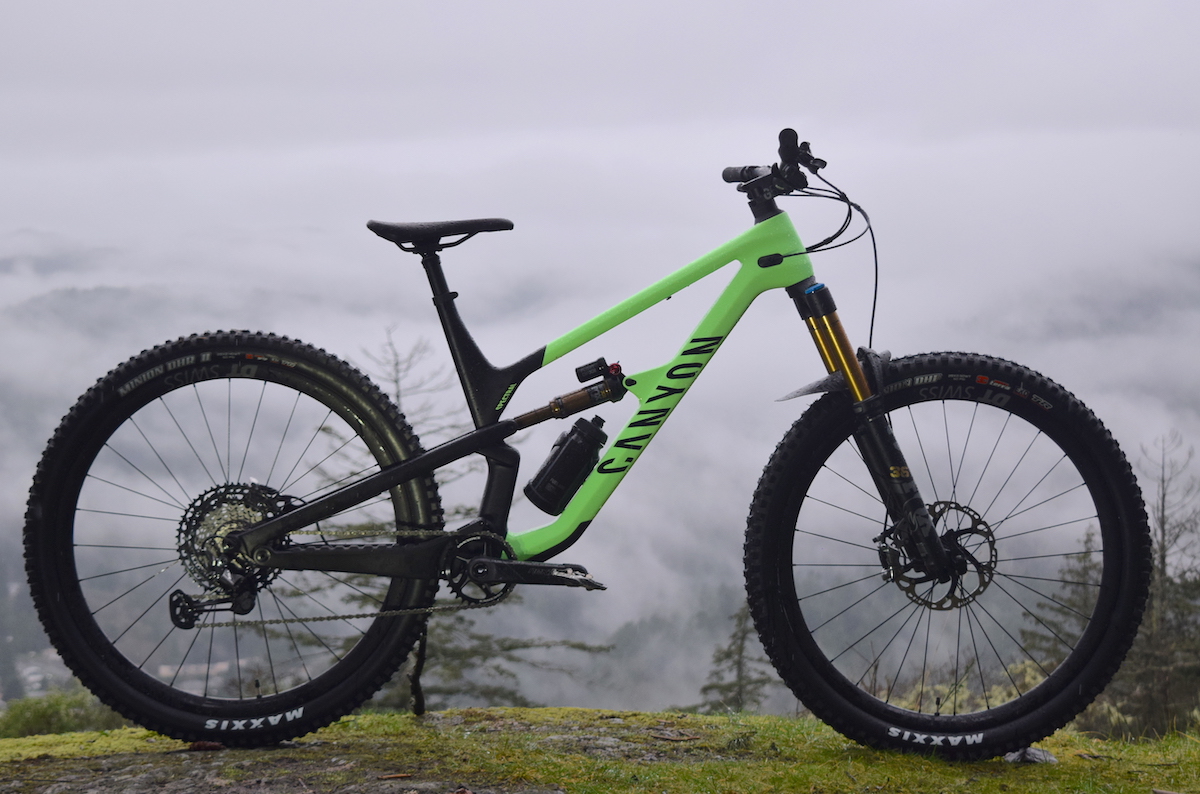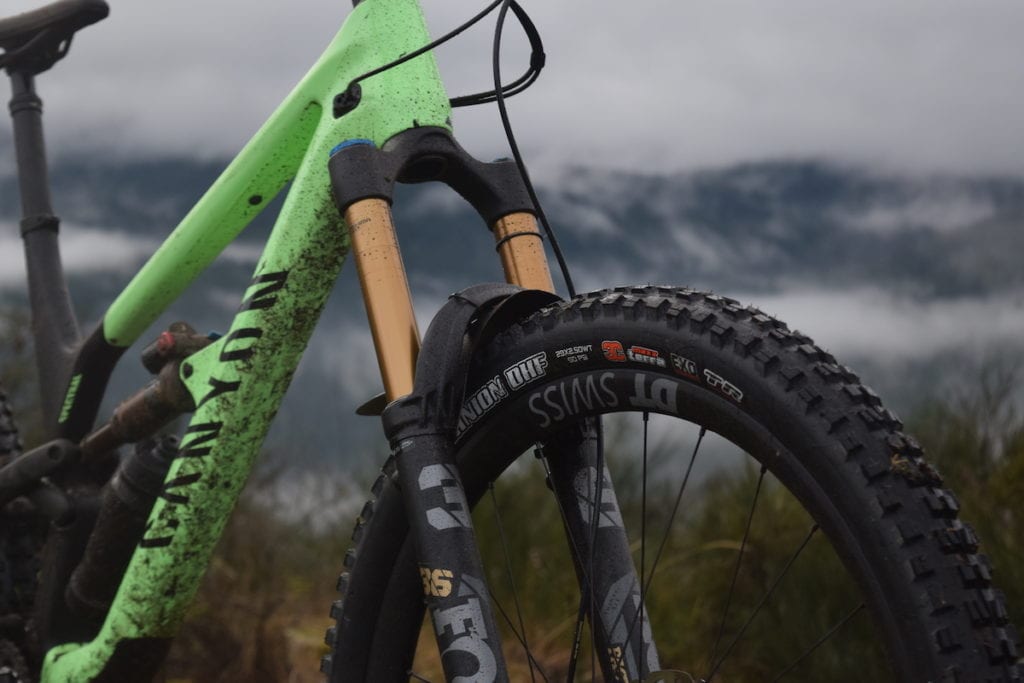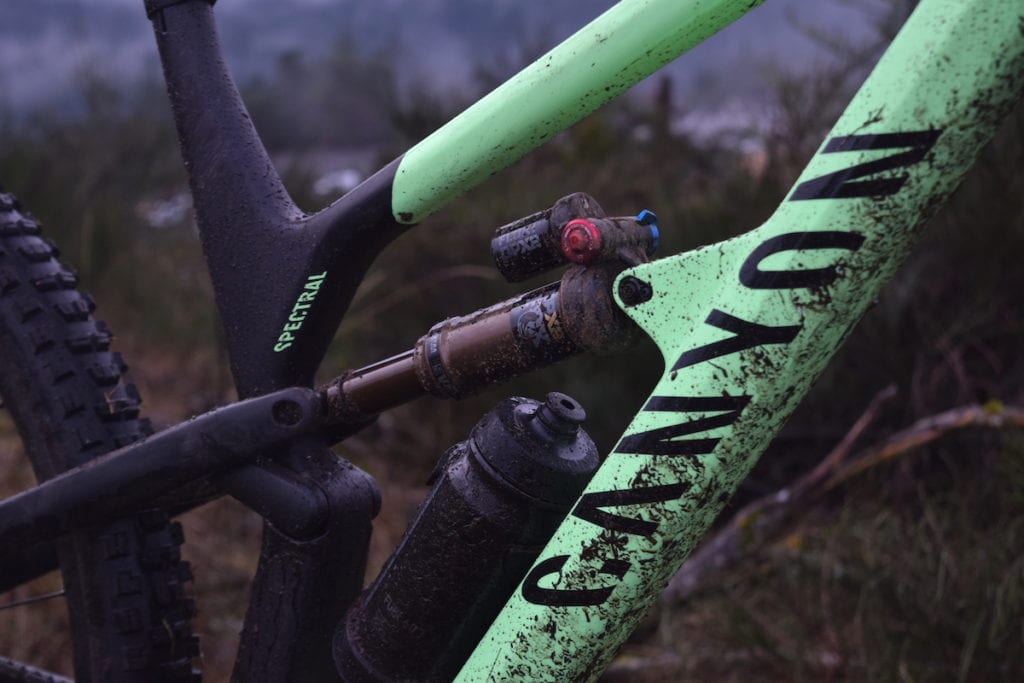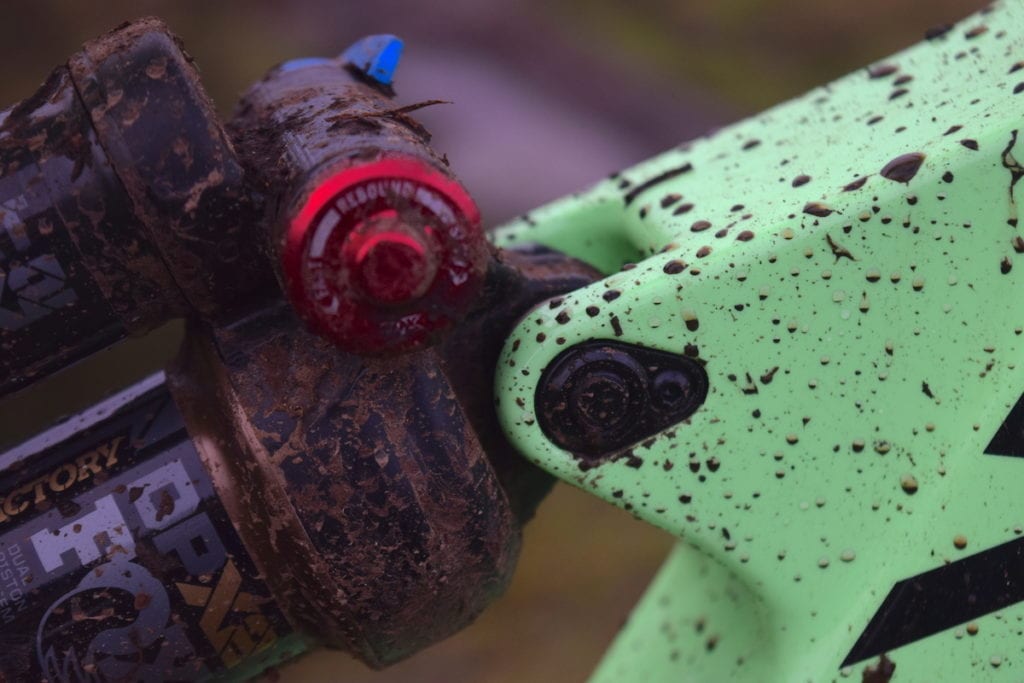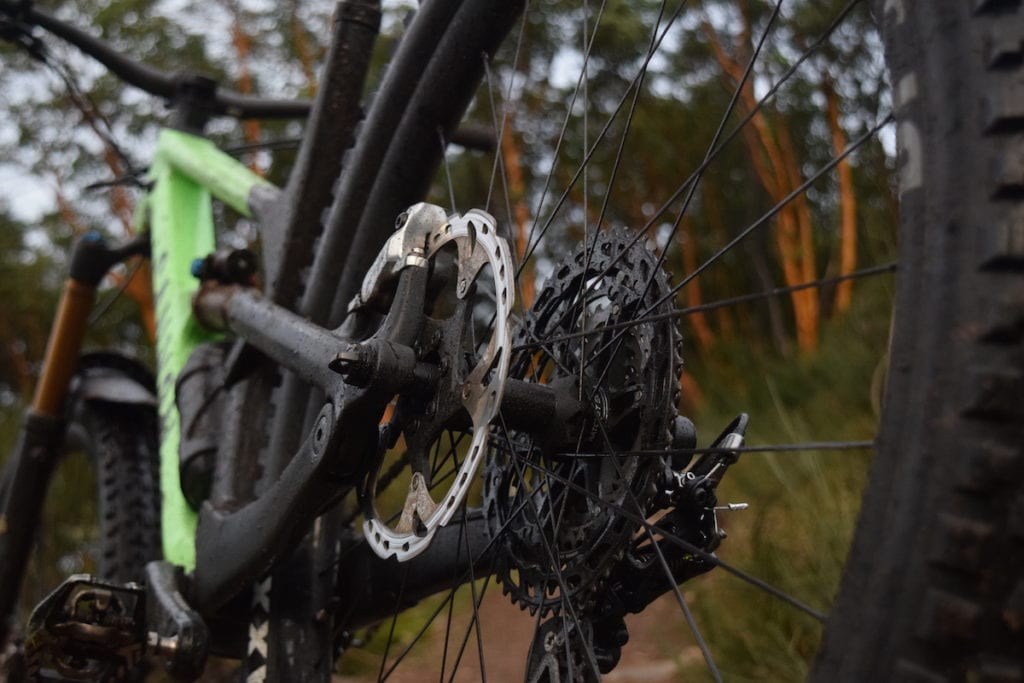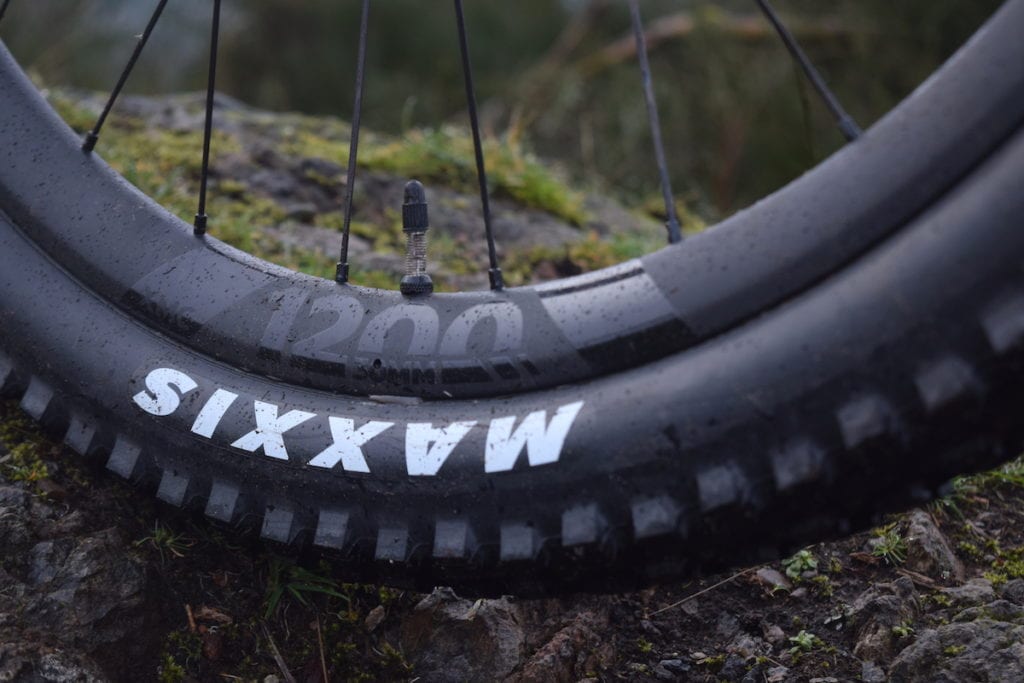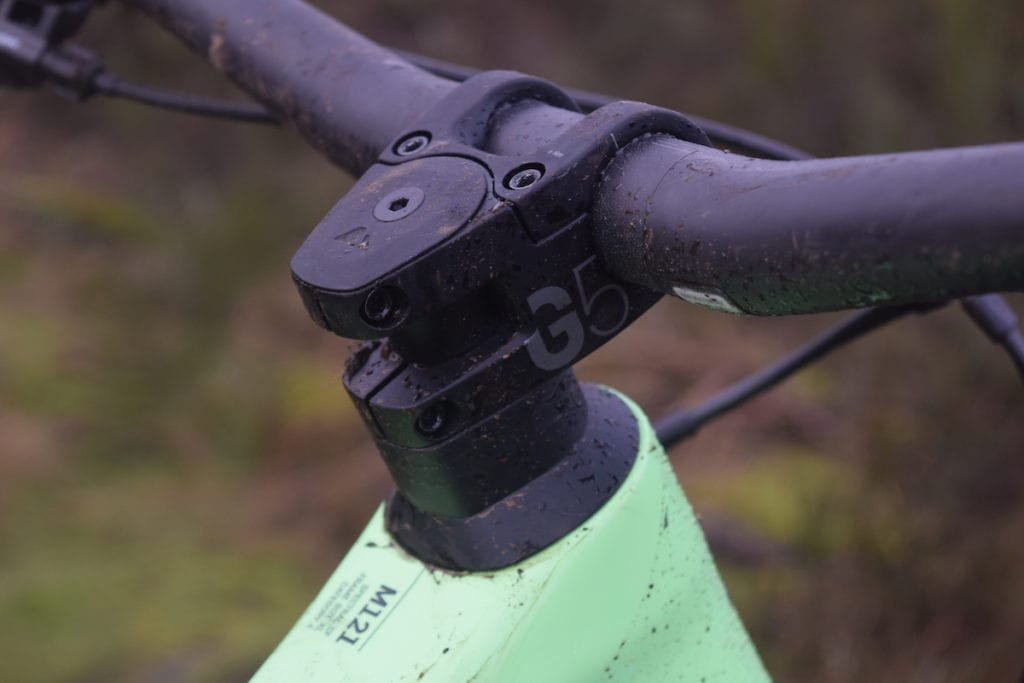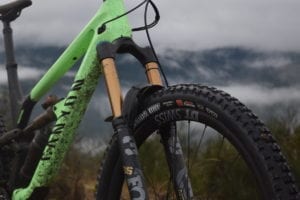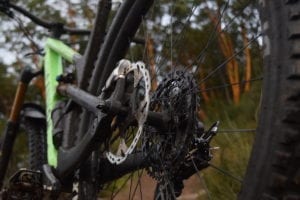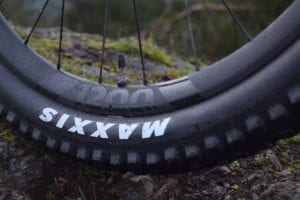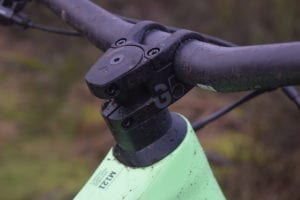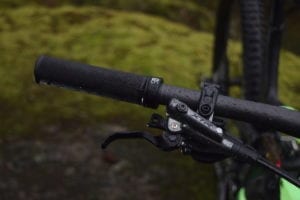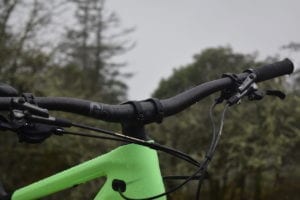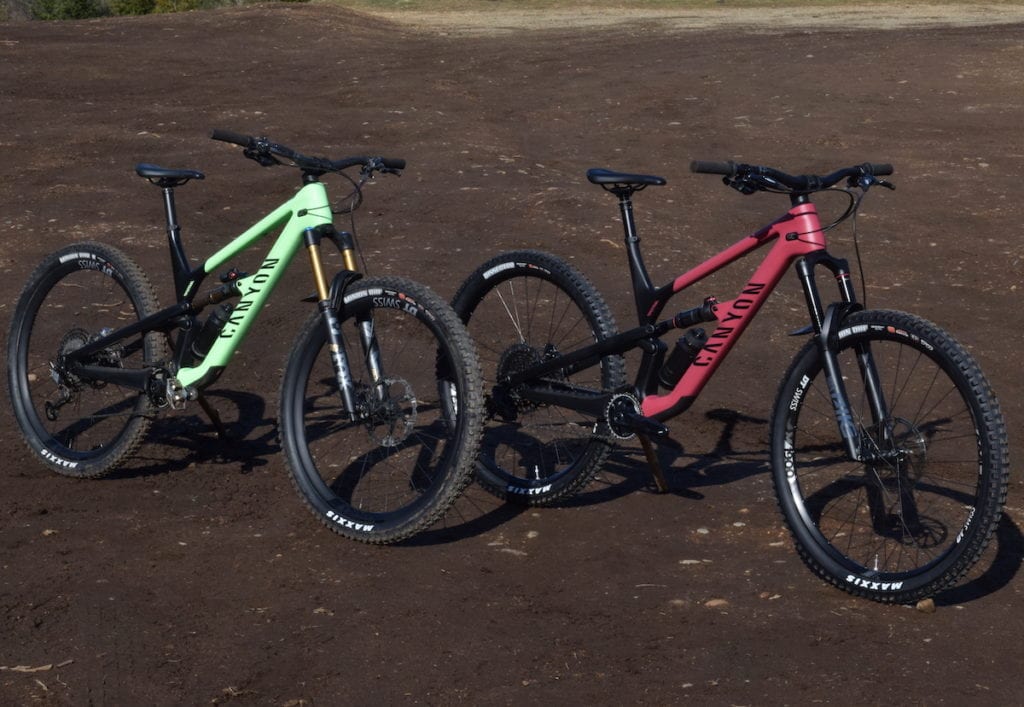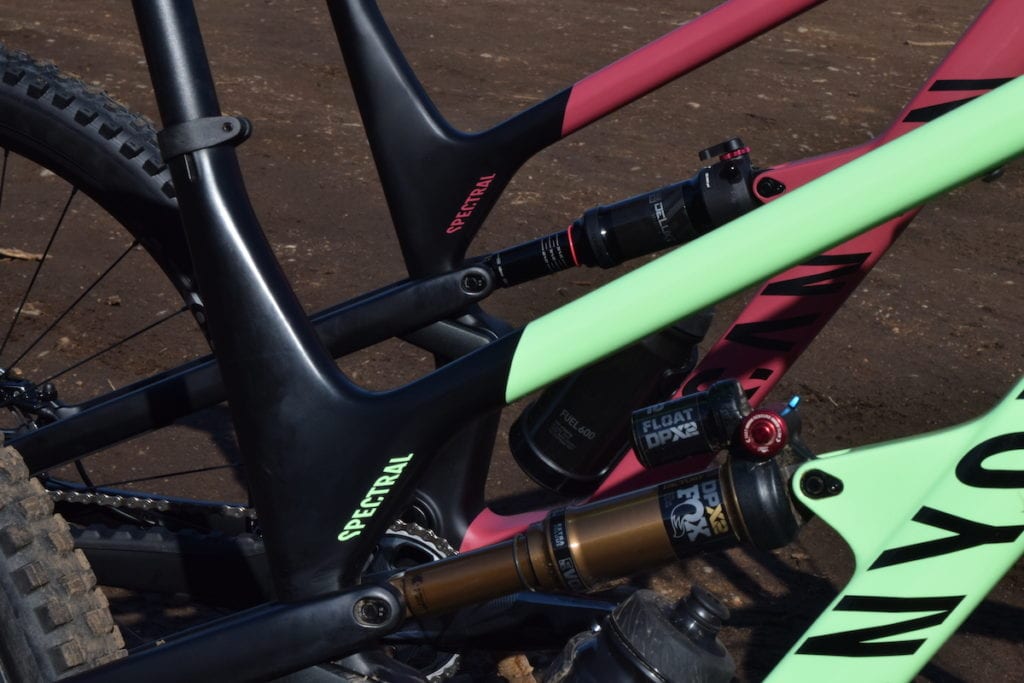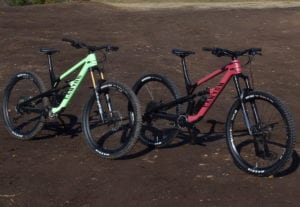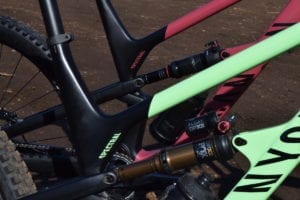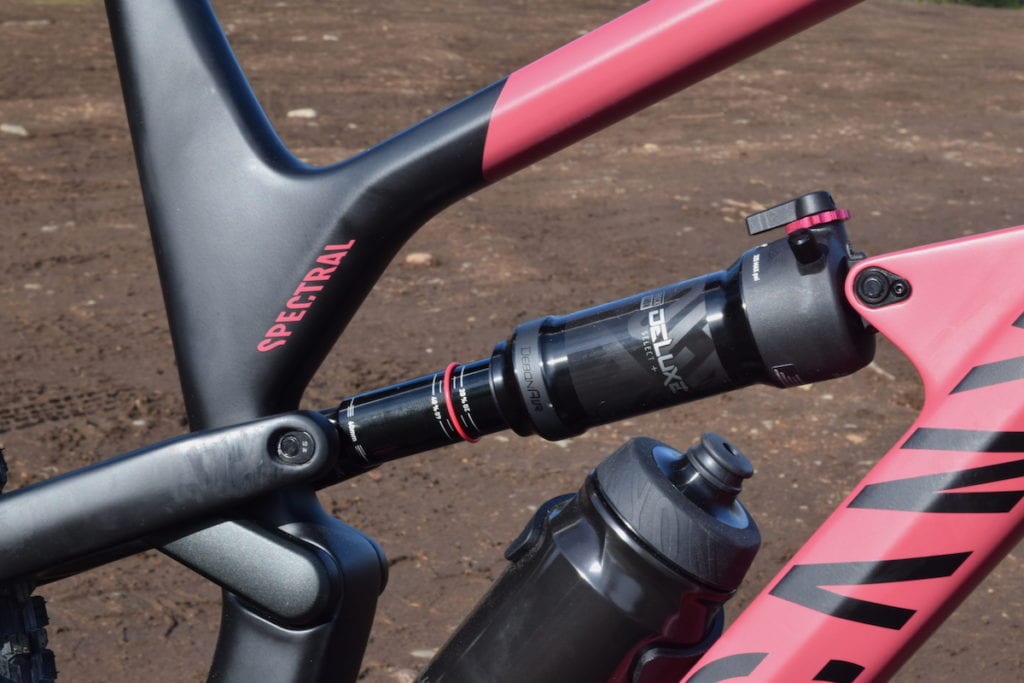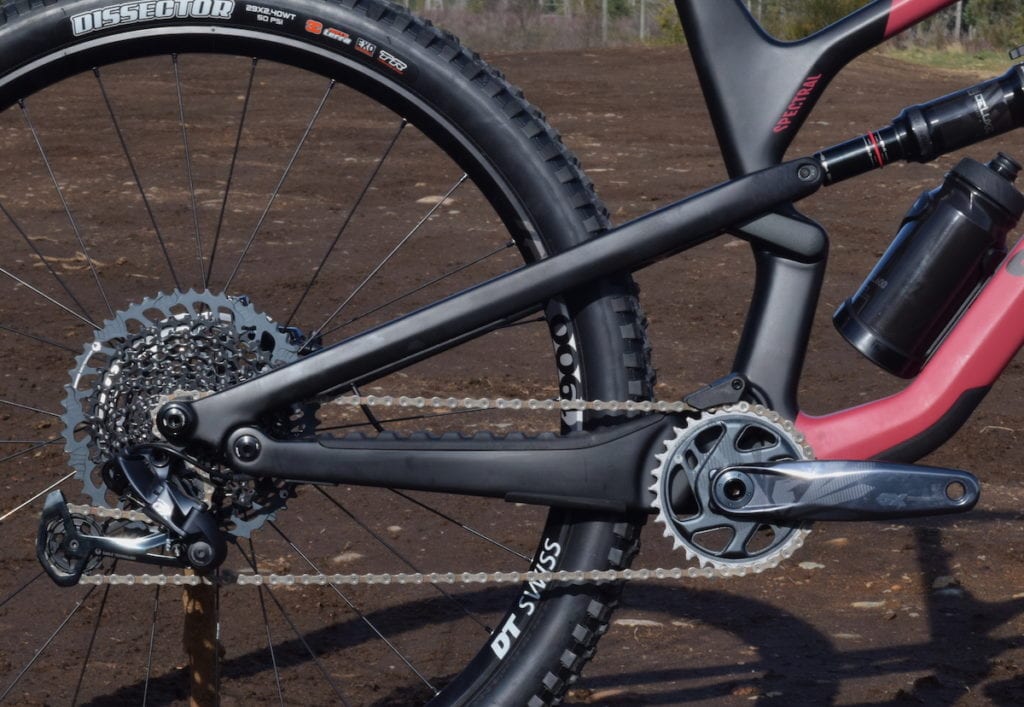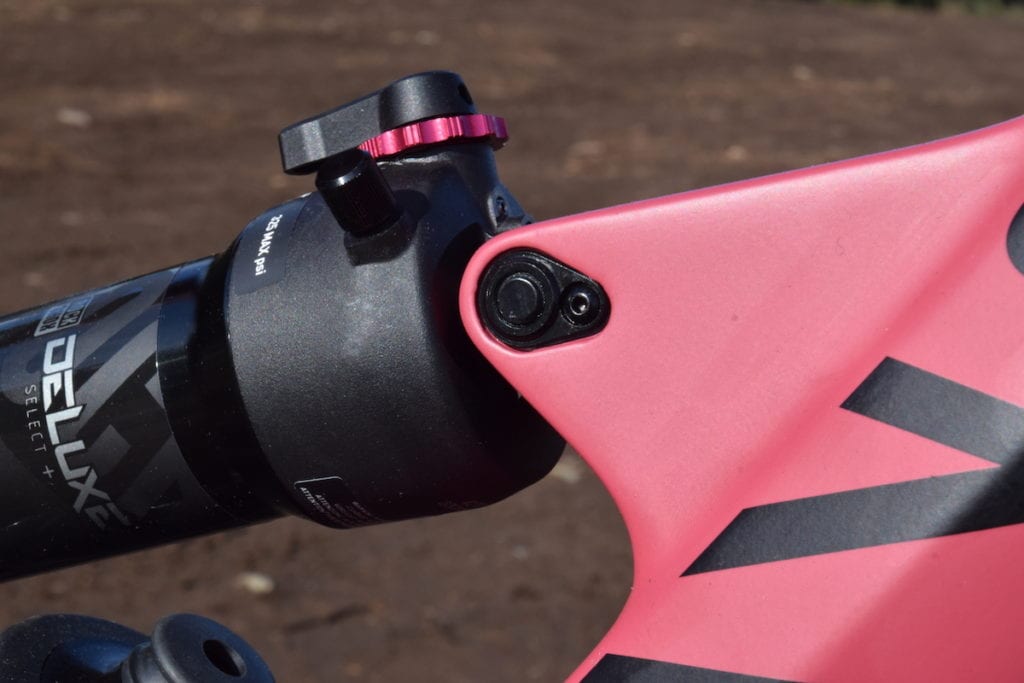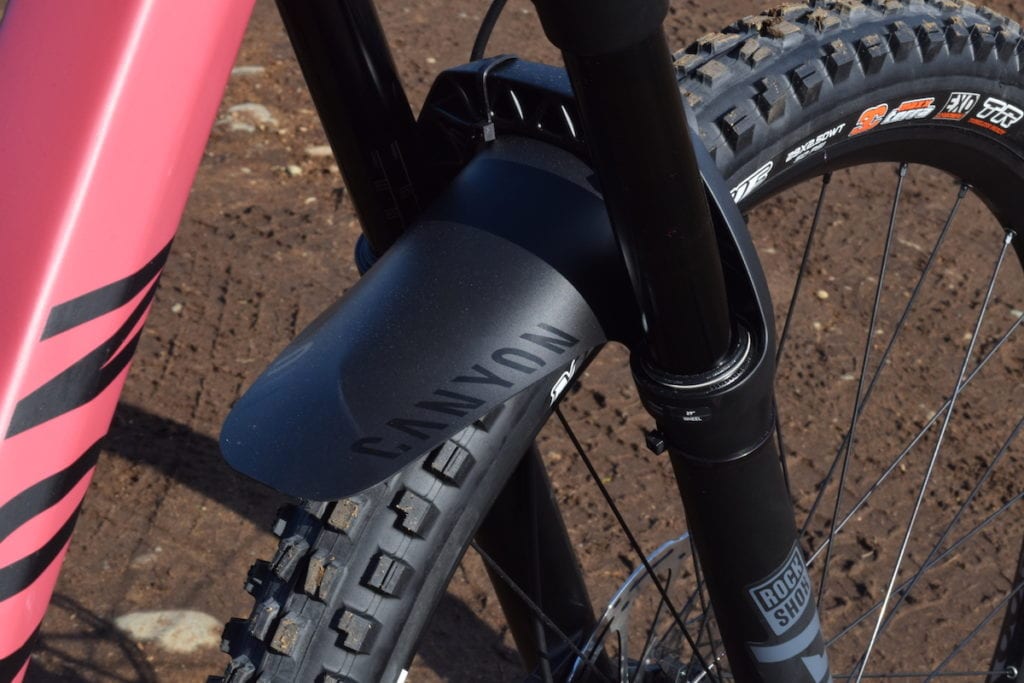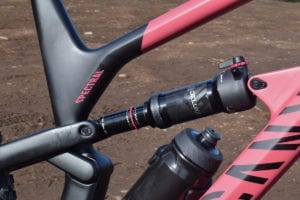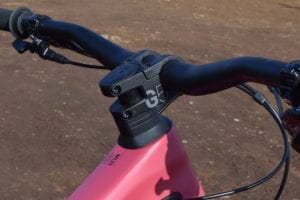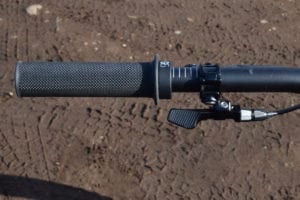Review: 2021 Canyon Spectral 29 LTD
Plus: Canyon's top-end build goes head-to-head with wallet-friendly CF7 "trail" build
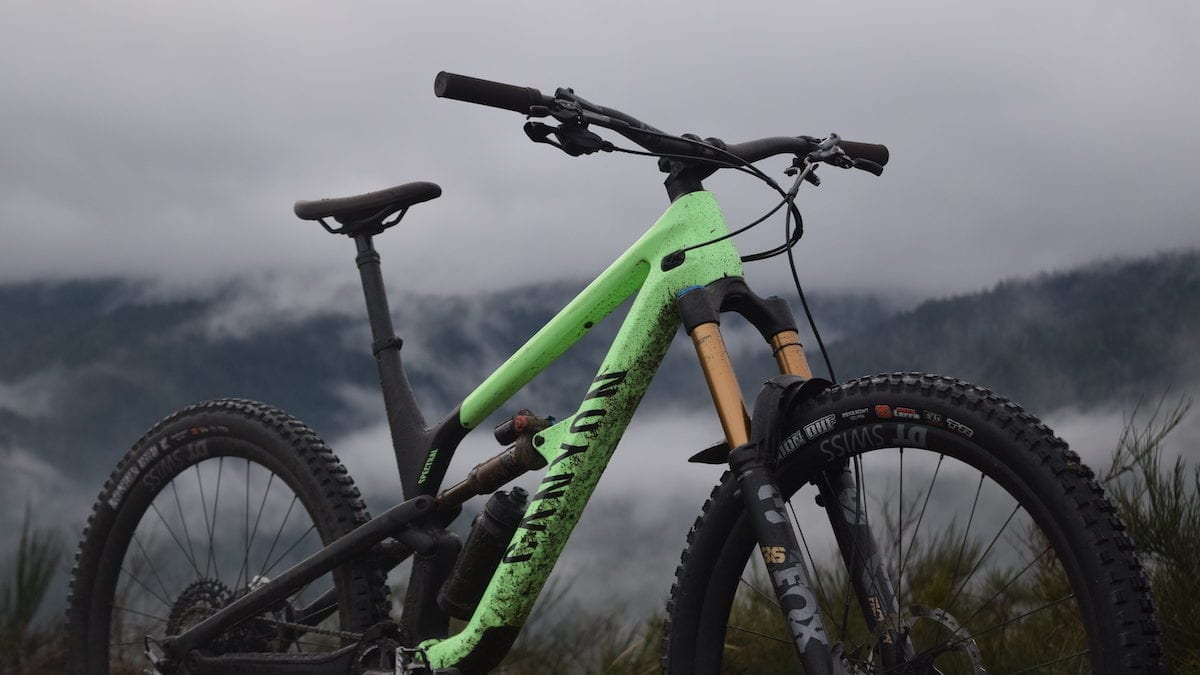
Trail bikes are an exciting and broad category right now. Canyon’s new Spectral is a particularly interesting option, offering light weight, efficient pedalling, but also 150 mm of suspension out back and 160 mm up front. But wait. Canyon? You can’t even buy those in Canada.
Canyon Bicycles
Canyon might be, at this point, the most recognizable mountain bike brand not available in Canada. Mark Wallace has raced the Sender at World Cups for years. Now Emily Batty and Laurie Arseneault are on the German brand’s XC bikes as part of Canyon MTB Racing. Through all of this, Canadian’s haven’t been able to buy a Canyon of their own. That is changing, though. The direct-to-consumer brand’s website promises its bikes will land in the Great White North this spring.
Ahead of that, we got our hands on the new Spectral 29 trail bike Canyon recently launched in December. Two of them actually. The drool-worthy Spectral 29 LTD, Canyon’s top-end “shred” spec build. And a Spectral 29 CF7, a more reasonably priced “trail” spec build.
Read on to see our review of the LTD, and a comparison between the two versions of Canyon’s trail bike.
2021 Canyon Spectral 29
While Canadian’s may be less familiar with the Spectral line, the iteration released in December is a major shift for Canyon’s staple trail bike. It added 29″ wheels, though the 27.5″ Spectral range remains, and significantly changed tube shapes for a much stiffer ride. The bike also gets the progressive geo treatment, following the lead of several Canadian and West Coast U.S. brands. The reach stretches out, head tube angle relaxes to 64-degrees for the LTD, and a steeper seat tube keeps riders in control on the bike.
The new Spectral uses Canyon’s “Triple Phase” suspension platform. It’s designed to offer a responsive feel off the top, for small bump compliance. A more supportive middle stroke keeps the Spectral from blowing through its travel and provides a solid pedalling platform. Finally, a significant ramp-up at the end of the stroke prevents a harsh bottom-out feel on bigger hits. While this is an ideal most brands target, Canyon really delivers. There are some small drawbacks to the design, but it is, in general, very impressive in real life – not just on paper.
There’s a host of other small details. Like Canyon’s own G5 cockpit, internally routed cables – including a tidy path into the rear triangle that is tucked in behind the BB – and rubber protection on the chainstays designed to quiet chain slap. There is frame some protection for the BB area but, on a carbon fibre bike this capable, I’d like to see more coverage on the downtube and maybe a shuttle pad like many other bikes in this category. Hearing rocks clunk off the frame made me shudder every time.
The other note on the frame is that Canyon uses a side-loading, 600 mL water bottle. While a full-sized bottle fit in the XL test bikes, it is tight on the shock. Smaller frame sizes might be limited to Canyon’s provided bottle, so you better stay on top of cleaning your bottle between rides.
The Spectral comes in two build options. The “shred” spec uses a 160-mm fork paired with 150-mm rear travel. This puts the trail bike at a reasonably aggressive 64-degree head tube angle, adjustable by half a degree to 64.5 via a flip-chip in the rear shock linkage. That chip also raises or lowers the BB by 8 mm, tailoring the Spectral for more speed, or more clearance on technical trails.
The “trail” spec comes with a balanced 150-mm of travel front and rear. It uses slightly less burly parts than the “shred’s” Fox 36, piggy-back shock. Instead, there’s a RockShox Pike and an inline rear shock.
Canyon Spectral 29 LTD
On the trail, the first thing you’ll notice – other than the LTD’s bright, “X-Ray” green finish – is the bike’s weight. The Spectral LTD frame weighs just 2,598 grams. Complete, the bike weighs just 13.57 kg. With a Fox Factory 36 fork, beefy 2.5″ Maxxis Minion tires and a Fox DPX2 Factory shock, Canyon is not holding the Spectral LTD back from pushing burly trails. It gets to its minimalist weight in part with the help of DT Swiss XMC 1200 wheels, full Shimano XTR 12-speed drivetrain and 4-piston trail brakes and Race Face Next SL carbon fibre cranks.
Climbing on the Canyon
Most rides start with a climb, and a trail bike needs to be able to perform in both directions. The LTD makes this easy, bordering on enjoyable. This is the first advantage of the Triple Phase suspension design. One advantage of having two identical bikes with different spec, is it made it easier to assess Canyon’s suspension claims. While the high end Fox DPX2 pedalled really smooth, so did the lower-end RockShox inline shock on the CF7. (Fox had other advantages, more on that later).
The takeaway is that Canyon really nailed what a trail bike’s suspension should feel like on the Spectral, and it’s not just down to using a good shock to save a bad kinematic. Combined with a dialled geo that puts you forward enough to keep control of the Spectral’s long reach, the result is a bike that is comfortable, even fun to climb. Especially with the svelte, sub-30 lbs. weight of Canyon’s LTD build.
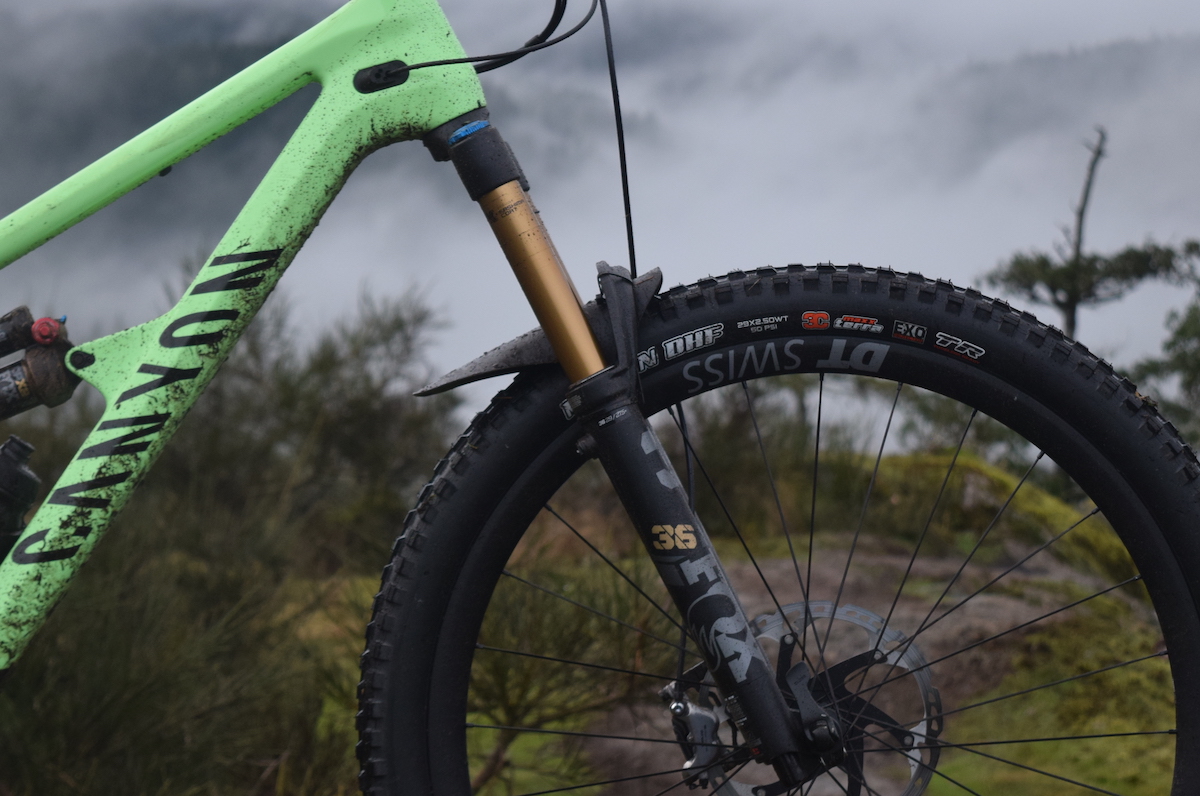
Spectral at full speed
Point down, and the Spectral likes to go fast. It has a wonderfully lively feel, with the solid mid-stroke support making the bike easy to get airborne of jumps, or even off roots and smaller trail features. The feathery XMC 1200 wheels change direction and accelerate with minimal effort, and took a beating when I didn’t always quite make the landing. The noticeably stiff Spectral chassis – with its large front triangle tubes and beefy chainstays – holds a line no matter how hard you push it into corners, and didn’t complain when it occasionally took the brunt of a sideways landing.
Speaking of casing jumps, the final ramp-up of the Spectral’s Triple Phase design delivers as promised. Even when I really didn’t make a landing, I never felt – or heard – a harsh bottom out or felt like I was getting bucked. Even when a friend’s video evidence clearly showed I’d hit the back end hard, it didn’t feel as bad as it looked.
What are Spectral’s weaknesses? Well, that depends where you ride. The one area where I did find the Spectral 29 out of its comfort zone was in really chunky, technical trails. All the stiffness that pays off in corners remains. The Spectral tracks straight, but the supportive middle-stroke can feel like it’s making you work to stay on top of the bike, instead of settling into the travel. This only happens on extended sections, though. The Spectral happily takes big hits, and repeated hits close together – as long as it has a second to recover between. Again, having two identical frames helped here. Fox’s very nice Factory suspension bits go a long way to smoothing out the chunkiest terrain in a controlled manner. Switching to the more trail-focused CF7, and I could feel the Spectral asking me to do more work instead of just floating along on top. The LTD does have 10-mm more suspension up front, but the same rear travel numbers.
That brings us to the comparison part of this review. Spectral vs. Spectral. Spy vs. Spy. Good twin vs. evil twin? Beatles vs. The Rolling Stones? Let’s find out.
Spectral vs. Spectral: LTD vs. CF7
I know what you’re thinking. You’re comparing the top end, XTR bike to a GX Eagle build. The fancy one is obviously better. But wait! It’s way more interesting than that. Every brand finds a different way to bring the price down from “dream build” to “I can actually afford that.” Some choose suspension, some choose drivetrain, while others use a nice set of wheels to stand out. What’s important is that these choices reflect the purpose and – to be a little west coast-ish with you – the “spirit” of the bike.
With the Spectral, there’s also a matter of slightly different purpose. But, with just 10-mm of suspension – and thousands of dollars – separating the two the bikes have a very similar purpose.

Canyon Spectral 29 CF7
As mentioned above, Canyon’s trail spec for the Spectral 29 is 0.5-degrees steeper, due to a 10-mm shorter travel fork. The frame has all the same features as the LTD, including the flip-chip geo adjust. The CF7 still tips the scales at just 14.17 kg, despite a less rarified parts build.
RockShox handles the suspension, with a 150-mm Pike Select RC fork and Deluxe Select+ shock. You still get full Maxxis tires, but in a less grippy compound and a faster-rolling Dissector rear tire replaces the LTD’s Minion DHR tire.
DT Swiss still provides wheels, but the carbon fibre XMC 1200’s are replaced with alloy M 1900’s. They’re slower to engage, but function just fine. SRAM GX Eagle 12-speed, with a 10-52 cassette, handles shifting reliably and GX has proven to have a durable, long lifespan.
This brings us to the SRAM G2 R brakes. To be blunt, these lack the stopping power to match the Spectral CF7’s potential. There’s a front 200-mm rotor and 180-mm rotor out back, but the G2 R’s do little to grab onto these. This led to some … spicy moment. Then some more tentative moments later in the test period. Canyon does deliver a whole whack of value in the CF7, but if you’re thinking of really pushing this bike, you might also want to think about changing out to different brakes. Its low entry price might just leave you the spare cash to do that.
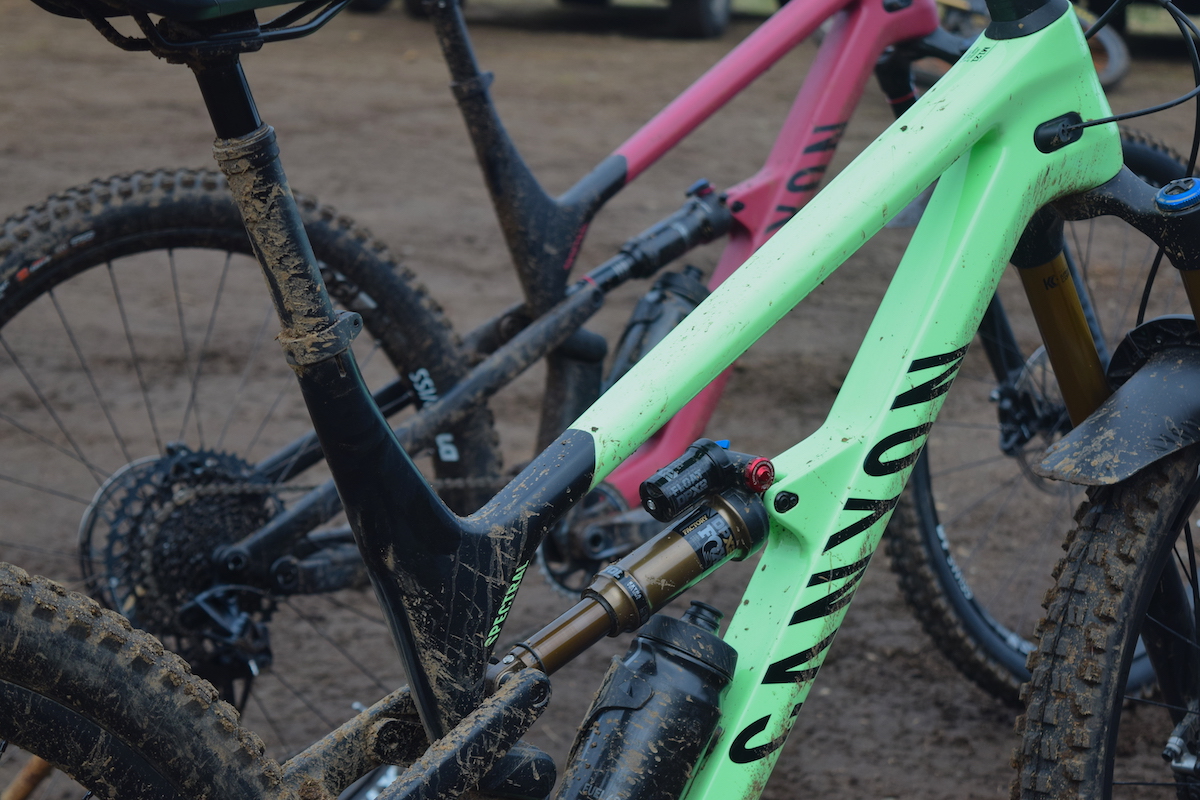
Rumble in the Jungle: Spectral LTD vs. Spectral CF7 on trails
The CF7 does have slightly less aggressive geometry than the LTD. This makes it feel a little more spry and lively on mellower, low-angle trails. It still has a very similar ride feel – and loves to dive into corners and picks up off the ground with speed. The Triple Phase suspension still makes the CF7 a very efficient climber, despite the minimal added weight. Compared to the LTD, the CF7 feels like a bike that will make any trail fun, while the LTD seeks out the hardest trails around.
Start getting into rougher terrain, and the more trail-rated components make themselves known. The LTD deals with steeper and rowdier trails, mostly due to a more capable parts build. Shimano’s XTR Trail brakes perfectly match the Triple Phase suspension, with the light control at the levers and supple top-stroke letting the LTD hold traction in sketchy situations. The G2’s struggle for the same level of modulation and control.
Similarly, while there’s only 10-mm difference between the Fox 36 and RockShox Pike, the 36 does much better dealing with big hits. The Pike Select+ is still an excellent trail fork at all but the extreme ends of the trail riding, though. So if you’re not planning on testing the Spectral’s ability to deal with nearly, but not quite making landings, the Pike Select + should not hold you back from looking at the CF7. I should note that Canyon does offer a higher end, RockShox Ultimate-level “trail” spec of the Spectral too, if you’re considering the balanced 150-mm option.
Most of the difference between the two bikes comes at the extreme ends of performance. The Spectral CF7 is a very fun, and very exciting trail bike. It is still easy to climb. It is still a riot on the descents, especially when you pick up speed on faster, more flowing trails. Canyon offers several levels of the “shred” and “trail” spec bikes. Which you choose should depend on whether you are trying to find the Spectral 29’s limits, or focused on having a real good time on every trail, from green cruisers to black-diamond challenges.
2021 Canyon Spectral 29: Conclusions
All in, Canyon has produced quite an exceptional bike. While it is slightly biased to faster, flowing trails, it does handle rough trails quite well. It’s not as supple in “the gnar” as some bikes, but its ability to bring a smile to my face in every corner on a mountain, and stand up to some serious abuse more than makes up for that. Add in the efficient pedalling, the Spectral 29 – from CF7 to LTD – is a bike I’d happily take out for quick after-work rips to big, epic adventures.
All of that comes before price. With Canyon’s size and direct-to-consumer model, the Spectral line actually looks even better when you flip over the (virtual) price tag.
The Canyon LTD, with full XTR, DT Swiss XMC 1200 wheels and Factory-level Fox suspension, costs just $8,150. That is a huge chunk of cash, to be sure, but far less than other similarly spec’d bikes. Those flashy XMC 1200 wheels alone retail for over $2,000.
Canyon brings the CF7 in at a more reasonable $4,500. That’s for full SRAM GX Eagle drivetrain, RockShox Select+-level suspension and solid DT Swiss M 1900 wheels. The G2 R brakes do leave something to be desired, as mentioned, but it’s a very solid price for an otherwise trail-ready package.
The LTD sits at the top of Canyon’s Spectral line. But, from the CF7, several aluminum frame options bring the price down even further.
Canyon’s website says the bikes will land in Canada soon. Until then, “Spring.”
